Google-acquired Schaft bested 15 others teams competing in a robotics challenge sponsored by the Defense Advanced Research Projects Agency (DARPA), by remotely navigating a sophisticated bot through a series of rescue-themed tasks better than the rest.
Each robot was judged according to four metrics, including mobility and dexterity; ability to manipulate and use tools designed for humans; ability to be controlled by non-experts; and partial-autonomy making task-based decisions. This semi-final round focused primarily on mobility, dexterity and manipulation.
The event organizers cited the Fukushima nuclear meltdown as one specific incident where sophisticated robots could have made a difference, and contestants were judged on proficiency within 30 allotted minutes in eight tasks that would be useful in a similar disaster:
• Vehicle: The robot must drive through a designated course and dismount the vehicle upon completion.
• Terrain: The robot must traverse uneven ground.
• Ladder: The robot must climb an eight-foot ladder.
• Debris: The robot must remove several pieces of debris and travel through the cleared path.
• Door: The robot must move through push, pull and weighted push doors.
• Wall: The robot must cut and remove a triangular piece from a wall.
• Valve: The robot must close three separate valves.
• Hose: The robot must manipulate a hose nozzle.
Schaft's win is no surprise, as the team released the following video showing its robot completing the difficult tasks ahead of the competition:
Each robot was judged according to four metrics, including mobility and dexterity; ability to manipulate and use tools designed for humans; ability to be controlled by non-experts; and partial-autonomy making task-based decisions. This semi-final round focused primarily on mobility, dexterity and manipulation.
The event organizers cited the Fukushima nuclear meltdown as one specific incident where sophisticated robots could have made a difference, and contestants were judged on proficiency within 30 allotted minutes in eight tasks that would be useful in a similar disaster:
• Vehicle: The robot must drive through a designated course and dismount the vehicle upon completion.
• Terrain: The robot must traverse uneven ground.
• Ladder: The robot must climb an eight-foot ladder.
• Debris: The robot must remove several pieces of debris and travel through the cleared path.
• Door: The robot must move through push, pull and weighted push doors.
• Wall: The robot must cut and remove a triangular piece from a wall.
• Valve: The robot must close three separate valves.
• Hose: The robot must manipulate a hose nozzle.
Schaft's win is no surprise, as the team released the following video showing its robot completing the difficult tasks ahead of the competition:
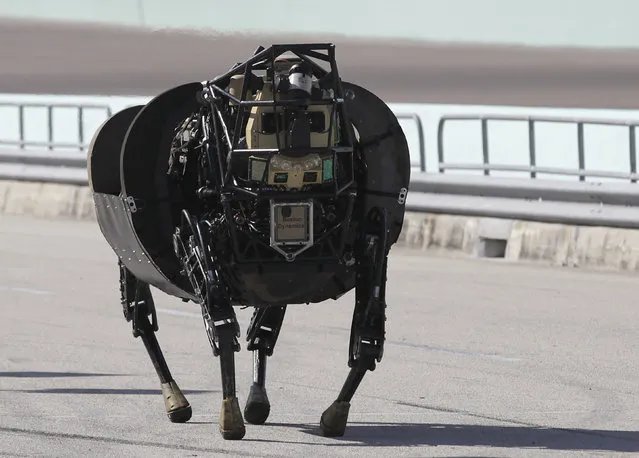
An LS 3 (Legged Squad Support System) robot demonstrates its movement, showing it is designed to accompany soldiers and Marines any place they go on foot, helping to carry their gear, during a demonstration in Homestead, Florida December 20, 2013. The south Florida city is hosting an international Robotics Challenge Trials this weekend, organized by the U.S. Defense Advanced Research Projects Agency (DARPA). The competition, for the creation of robots that can respond to natural and man-made disasters, was created following the 2011 Fukushima-Daiichi nuclear power plant disaster in Japan. After the disaster the Pentagon sent robots designed to disarm improvised explosive devices in Iraq to try to help fix problems at the destroyed reactor in areas highly contaminated by radioactive releases where humans could not work. (Photo by Andrew Innerarity/Reuters)
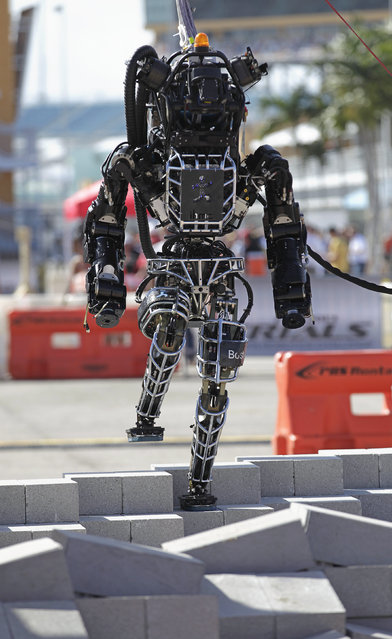
Boston Dynamics' Atlas, a high-mobility, humanoid robot designed to negotiate rough terrain, takes on an irregular surface in this terrain negotiation exercise in Homestead, Florida December 20, 2013. (Photo by Andrew Innerarity/Reuters)
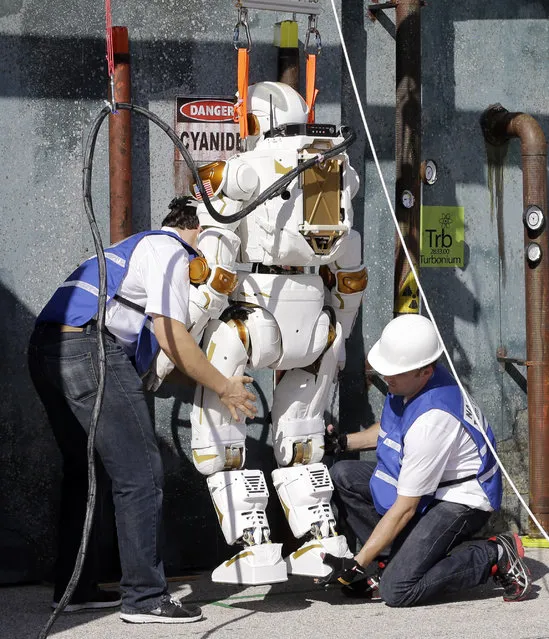
Members of Team Valkyrie, NASA Johnson Space Center, try to repair Valkyrie after it stopped responding during the wall task at the Homestead-Miami Speedway, Friday, December 20, 2013, in Homestead, Fla. Seventeen teams from the United States, China, Japan, and Korea are participating in the DARPA Rpbotics Challenge Trials. The event is a test of some of the most advanced robots in the world. (Photo by Alan Diaz/AP Photo)
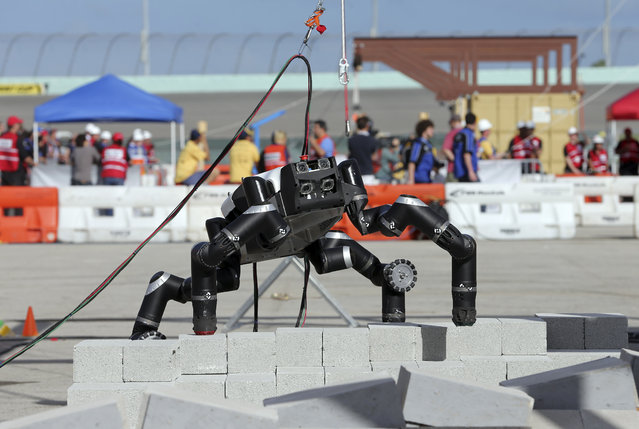
RoboSimian, NASA Jet Propulsion Laboratory, takes a step during the terrain task at the Homestead-Miami Speedway, Friday, December 20, 2013, in Homestead, Fla. (Photo by Alan Diaz/AP Photo)
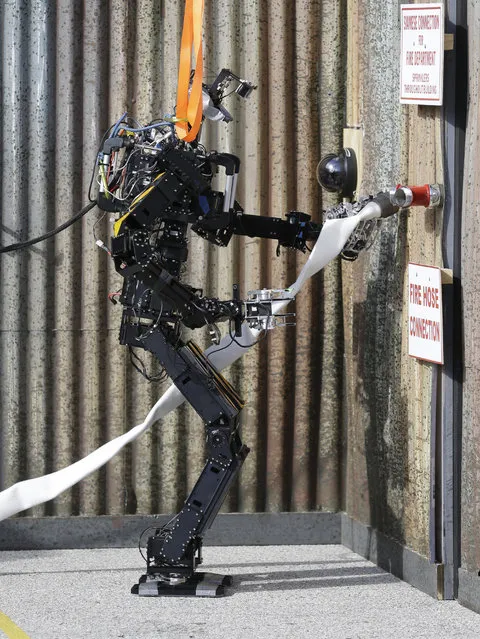
Thor, Virginia Tech College of Engineering, Robotics and Mechanisms Laboratory, tries to connect the hose to a firehose connection during the hose task at the Homestead-Miami Speedway, Friday, December 20, 2013, in Homestead, Fla. (Photo by Alan Diaz/AP Photo)
03 Jan 2014 09:26:00,
post received
0 comments
